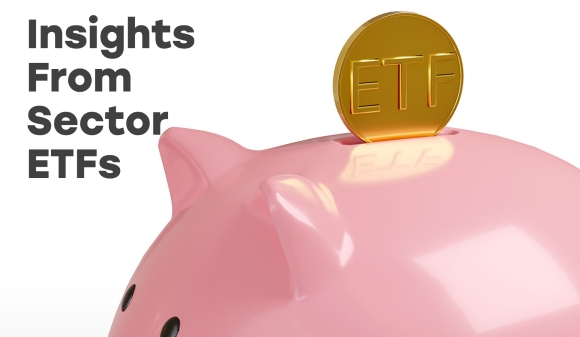Insights From ETFs: Best-Worst Performers

 For this iteration of Exchange-Traded Funds (ETF) Insights, we look at the most impacted sectors by the March 2020 sell-off and examine how they have performed to date and over the last five years.
For this iteration of Exchange-Traded Funds (ETF) Insights, we look at the most impacted sectors by the March 2020 sell-off and examine how they have performed to date and over the last five years.
We took the five worst-performing sector ETFs during the March sell-off:
- SPDR S&P Metals & Mining ETF (XME)
- SPDR S&P Regional Banking ETF (KRE)
- U.S. Global Jets ETF (JETS)
- SPDR S&P Oil & Gas Exploration & Production ETF (XOP)
- VanEck Vectors Oil Services ETF (OIH)

The chart above (Fig. 1) reflects the March sell-off period when the pandemic broke out in the U.S. in February 2020, which lasted for about a month before markets began to recover from the lows.
There are no surprises here. Oil & gas and oil services were by far the worst-performing as oil prices went into the negatives at one point. Airlines, of course, saw almost a complete halt in business. With cuts in interest rates and record unemployment, bank profits were expected to suffer. Although the banking sector was one of the first to receive support from the federal reserve this time around, a sell-off in the banking sector also may have been an investor “reflex” with the 2008 recession in recent memory, which resulted from a lack of confidence in the financial system. Finally, with metals and materials being the “starting point” of most industrial activity, the metal and mining sector was also one of the worst performers during this period. Interestingly even gold miners were not safe during this sell-off period despite gold prices generally benefiting from uncertainty.
Now let’s see how these industry ETFs performed if someone had held them through the brutal sell-off until today (Fig. 2).

We purposely did not graph this starting from the March lows as we wanted to take the perspective of a long-term investor who may have started a position at an “unfortunate” timing.
The first thing that caught our attention was despite how strong the recovery in airline stocks was from March lows, the performance of the JETS ETF is still very much in the negative. To us, this illustrates a good example of why it may be worth cutting your losses, especially if the fundamentals have changed, rather than waiting to “break-even”. Clearly, there were better opportunities to more than make up for short-term losses. Many investors may have expected airlines to make a bigger comeback. Still, fundamentally, airlines have had the largest negative impact of any industry, with revenues being slashed by as much as 90% and still largely operating at negative cash flows. It is worth noting that the airline industry is more focused and isolated than the rest of the graphed sectors. One theory here is that the broader the application of a particular industry to the rest of the economy, the more resilience it will likely show (Fig. 3).

We find it more interesting and insightful to see which investments have stood the test of time as it tells more of a story than a shorter time frame does. Starting with airlines again, if you owned the JETS ETF starting five years ago, it would have ended up being a decent investment with an annualized return of ~5%. While that does not sound outstanding, it makes sense considering the ongoing impact of the pandemic on this industry.
This also means a long-term holder of airline stocks vastly outperformed an investor in the oil and gas sector, as indicated by the performance of both related ETFs (XOP and OIH). This is an important takeaway for long-term investors. Although oil and gas may look attractive in the short-term as crude prices begin to recover and the economy kicks back into gear, the long-term trend is still downward for fossil fuels, especially as we continue to invest in renewable energy. A point worth noting here is we found that ETFs related to renewable energy stocks such as the Invesco WilderHill Clean Energy ETF (PBW) and the Invesco Solar ETF (TAN) were among the strongest performing industry ETFs (PBW being the strongest) over a five-year period with a cumulative return of 400% +.
Out of the worst performers during the sell-off, KRE and XME representing the U.S. banking and mining sectors respectively each still would have returned an impressive ~15% annualized even when factoring in the March correction. Interestingly, the performance of these mining and banking ETFs was still only in the mid-range of performance of all major industry ETFs we screened for.
This speaks to the resilience of these sectors and the resilience of the markets over longer periods.
Moez Mahrez, CFA, Analyst for 5i Research Inc.
Disclosure: Authors, directors, partners and/or officers of 5i Research have a financial or other interest in XIT and ZRE.

